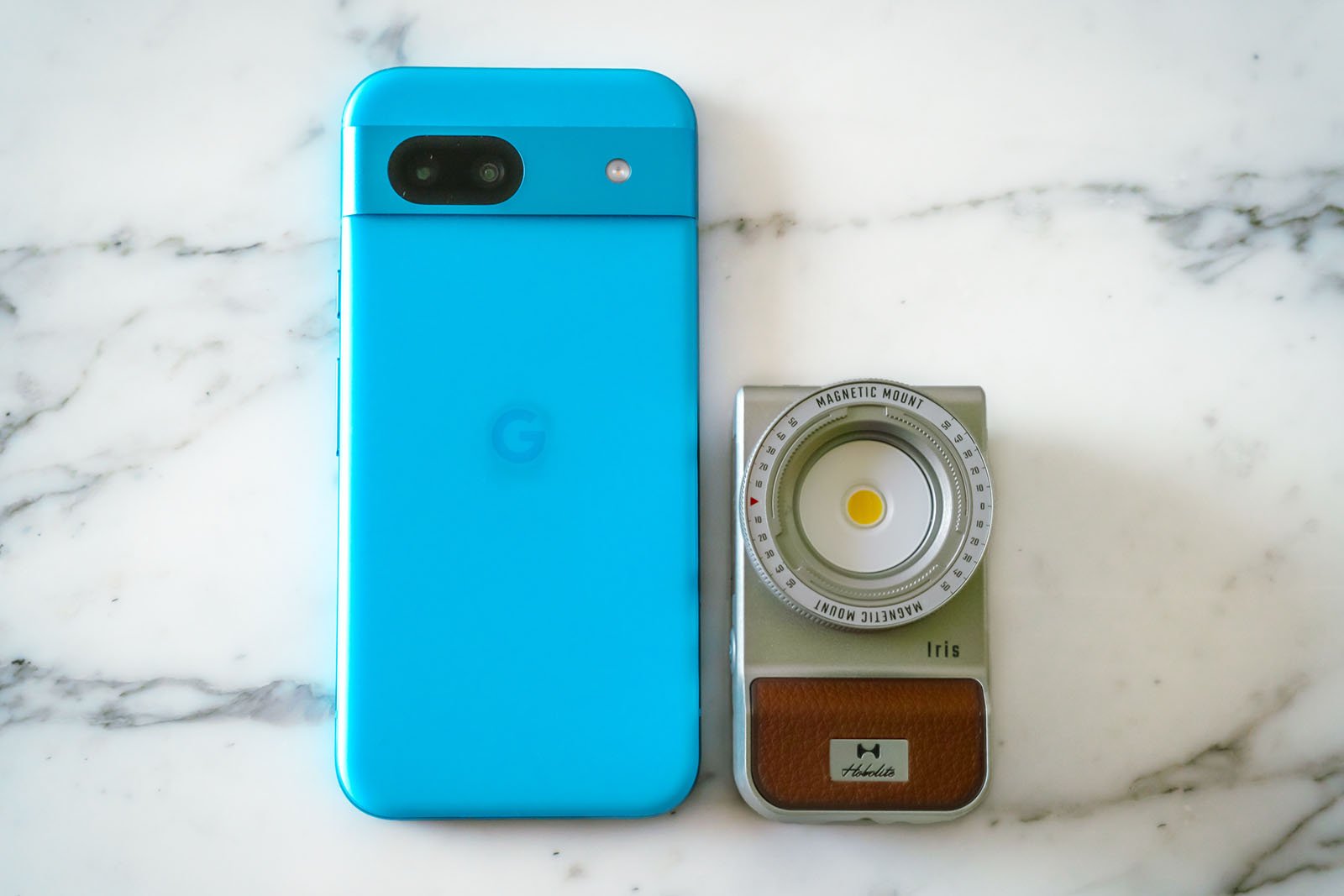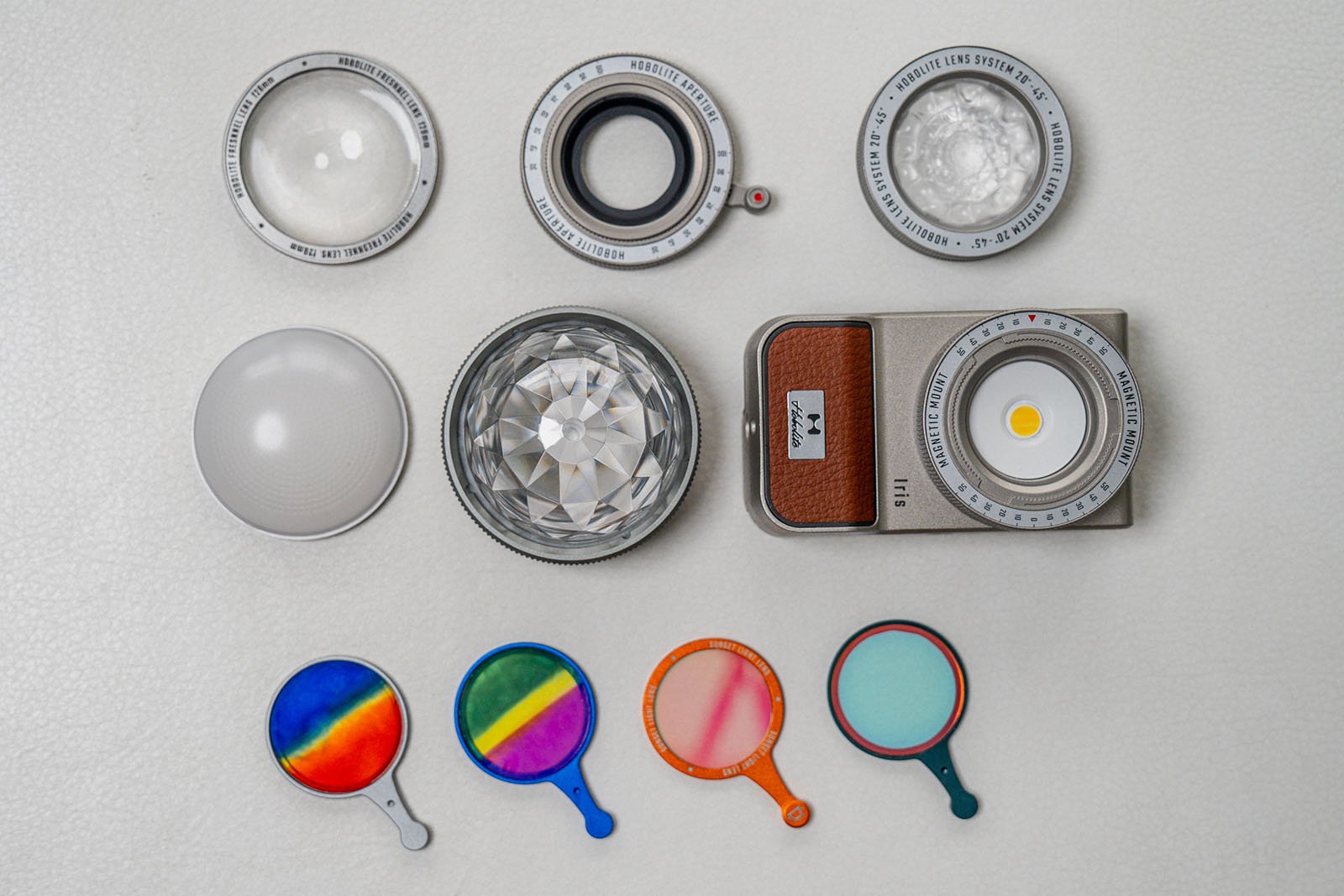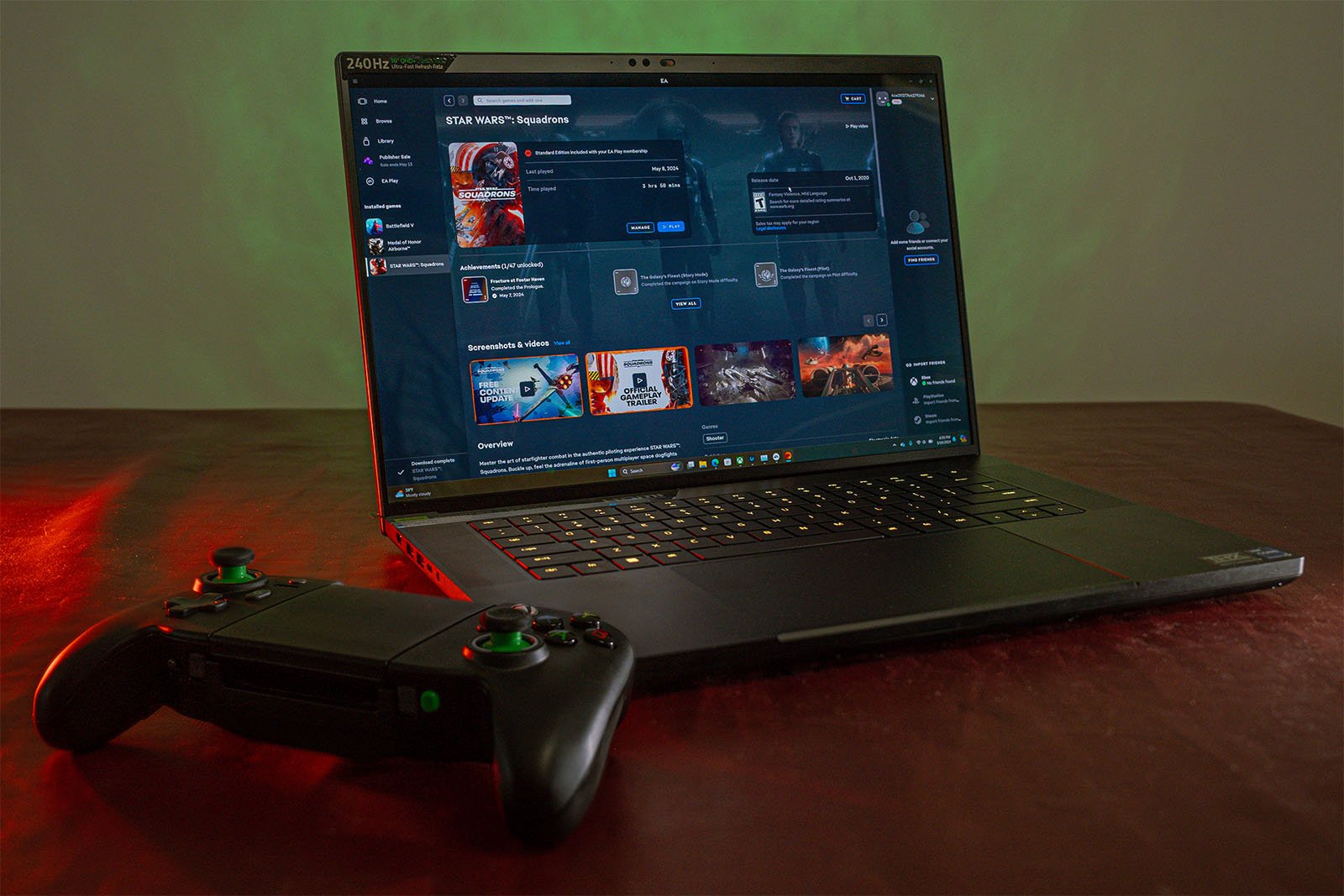![]()
The Hobolite Iris, the company’s latest addition to its lineup of LED lighting equipment, is small enough to slide into a pocket yet versatile enough to deploy in a variety of ways. The main reason why is because it integrates into the broader Hobolite ecosystem, with particular compatibility with the existing Hobolite Micro light.
Clearly inspired by retro cameras, the Iris resembles a small vintage point-and-shoot and sticks with Hobolite’s design ethos by matching a metal body with faux leather trim. The aluminum body is IP54-rated, so it offers a reasonable level of dust and water resistance, and it has two 1/4-inch threads underneath (upright or sideways) to mount it on tripods and other accessories.
Without any attachments, it’s lightweight at 0.35 pounds (about 160 grams). It is designed to stay propped up on its own or used handheld when not mounted to anything, opening up various methods of use.

It offers a color range from 2700K to 6500K and high CRI and TLCI ratings of 96+. Given its more diminutive size, its power will be relatively low for lighting bigger subjects. Hobolite says it doesn’t really intend for it to be a key light but can act like one, depending on what the photographer or videographer has in mind. So, in that respect, the Iris isn’t necessarily just a standard small pocket light.
Modifiers and Attachments
Its utility also largely depends on how you accessorize it. Hobolite will offer the Iris in two kit options. The $100 Standard Kit has the Iris itself, the Adjustable Lens, and Frosted Dome, while the $200 Creator Kit has all three, along with the Magic Lens, Fresnel Lens f/28mm, Aperture Ring, and Gel Filters. If you go with the Standard Kit, you can get any of the extra Creator accessories as add-on kits, the Optical Modifier or Colored Gel Filter Essential Pack.

These additions change what the Iris is capable of by increasing control over the light coming out of it. It’s a 5W light, lower than the 8W Hobolite Micro, and can output 300 lumens. The adjustable lens has a beam angle range from 20° to 45°, plus a six times boost in brightness at its narrowest angle. Based on a distance of 3.2 feet (0.5 meters), the adjustable lens can output 2,093 lux at 2700K, and on to 2,820 lux at 6500K in spot, dropping down to 745 and 1,037 lux, respectively in flood. Add the Fresnel Lens and you get max output of 1,136 lux.
The Aperture Ring has a standard manual lever to let you adjust how much light passes through in case you want to narrowly focus the beam or leave it more open. The Magic Lens looks like a miniaturized mirror ball to add something like a prism effect to images.
![]()
Then there are the Colored Gel Filters, of which there are four to start: Golden Hour, Blue Hour, Spring Pastel, and Aurora. Slide any one of them into the crevice atop the main lens mount and you add tone and color to the light for more creative avenues. Whether Hobolite makes more and what they’ll look like remains to be seen.
Key to all these pieces is the company’s magnetic system that makes lenses and attachments easy to stack on the Iris itself. Moreover, both the Iris and Micro share the same magnetic mount, meaning their accessories are equally compatible — the only exception being the Gel Filters because of the Iris’ crevice. That immediately doubles the gel filter options available for the Iris if you have the set that comes with the Micro. Not to mention the Micro’s barndoor as well. In turn, you can also use the Aperture Ring and Magic Lens on the Micro. The only other key difference between them is the Iris doesn’t have the Bowens-style mount the Micro has, so there’s no way to use Hobolite accessories like the Micro Foldable Softbox. A company rep I spoke with suggested there was no need to use it with the Iris because the Frosted Dome is good enough, but to my mind, it’s always nice to have more options to diffuse light.
![]()
Ripe for Experimentation in Close Quarters
By its very size, the Iris is fit for product photography, especially when you play around with it. There’s really no right or wrong way to deploy it — just what you think is ideal for the look or mood you’re going for. Its modularity helps find workarounds or open up possibilities, which only makes it more fun to work with.
It’s a lot easier to do that with the Creator Kit over the Standard one simply because the extras you get with it can inspire more creativity. For me, the Iris fit in well with the kind of product photography I often do for my job, usually as an accent light but sometimes as the key light if the product wasn’t too big. And because it’s small enough to hold or set up in various ways, it’s also possible to use random items to either create effects or expand the light somehow. Think of a small mirror, a glass, jars, textured surfaces — anything that can make both the light and subject stand out and appear more interesting.

While using it, especially with the Magic Lens mirror ball, the Iris reminded me of Lensbaby’s different lens effects, only what Hobolite has here feels more practical and versatile. Like other Hobolite lights, the Iris lets you control the intensity of the light, either through the onboard dial or from the Hobolite app after pairing it via Bluetooth. The same eight effects (flash, flame, TV screen, lightning, pulse, fireworks, shutter, explosion) are also available. Coupling those with the different gels and lenses tends to make things interesting.
Despite that, it’s hard for me to say where the Iris would be perfectly suited or not. It’s not the brightest light out there, yet it’s deceptively bright when you crank it up and move it closer to what you want to capture. Nor is it a strobe you can sync with your camera, though its portability makes it an intriguing support tool for mobile photography. The better the lighting, the better chance a phone has of producing a great shot.
![]()
I like its versatility. I could use the Iris whether I have a mirrorless camera or phone to take some shots. That could include mounting it on a mini-tripod or even a selfie stick and using it handheld to do some light painting or experiment with placement and angles while the camera shoots on a timer. The only thing is general portability is somewhat relative based on all the attachments. Both kits come with a pouch for the Iris itself, but you’ll have to make room in other ways to bring along the rest, even more so if you have the Micro’s accessories as well.
Fun and Functional
At full brightness, the battery can last up to two hours per charge. The battery life is 2.6 hours at 75%, four hours at 50%, eight hours at 25%, and an impressive 18 hours at 10%. It charges via USB-C, so in the field, you can always use a power bank to keep it going longer when you need it to at brighter settings. These figures held true in my testing.
It’s also the kind of light that doesn’t require a whole lot of advanced knowledge. You can very easily adjust settings and put it where you want without having a significant level of experience or expertise in lighting a subject, spurring anyone to try and figure things out through sheer trial and error. Seasoned photographers will instinctively know where the Iris can fit in once they have it in hand, and I personally really like that it isn’t complicated to deploy and adjust.
![]()
There are a couple of nuances, though. For one, using a Gel Filter impedes the Adjustable Lens from sitting flush against the mount because of how the lens protrudes inward. One workaround I found was to put the Aperture Ring in between them, though the Adjustable Lens isn’t 100% secure because of a slight gap between them.
I’m all for good gear that can foster creativity and this feels like it. Maybe it’s because it’s essentially a lens and light put together where you can manipulate light and choose how much to narrow or throw at anything you point it at. Hobolite says it wants people to “explore the magic of light” through the Iris and intends to cater to creators of all stripes. Seeing is believing, though, and that tends to shine through when you actually get to use it. It’s now on Hobolite to continue supporting this light with accessories and compatibility choices to expand on that.
![]()
Are There Alternatives?
I had people assuming the Iris was a camera I was using to take photos of other items rather than just lighting them. So, from a design standpoint, I’m not sure there are any lights that can match what Hobolite’s done here aesthetically. Functionally, however, the Aputure MC RGBWW Mini LED Light is a dependable alternative that is also 5W, offers more color variances, has a built-in magnet in the rear for placement, and supports Qi wireless charging. It’s also a broader light surface that casts a wider flood, including with the included diffuser, only you can’t narrow or manipulate it the way you can with the Iris because there aren’t accessories in which to do it.
The Rotolight Neo 3 still stands out because it has different versatility in that you can use it as a high-speed sync flash with the right accessory. Its peak brightness is several times that of the other two, and offers a dizzying array of digital filters with the option to save your own presets. But it’s also noticeably bigger and less modular than the Iris, so it’s safe to say they can serve slightly different needs. If you prefer a little more power and using different accessories, the Hobolite Micro is reasonably close in size and offers more brightness if you need it.
![]()
Should You Buy It?
Yes, especially if you’re looking for something unique and have ideas on where it can help capture what you’re looking for. The Creator Kit is probably the better way to go just for the additional creative choices the extra pieces can provide.
